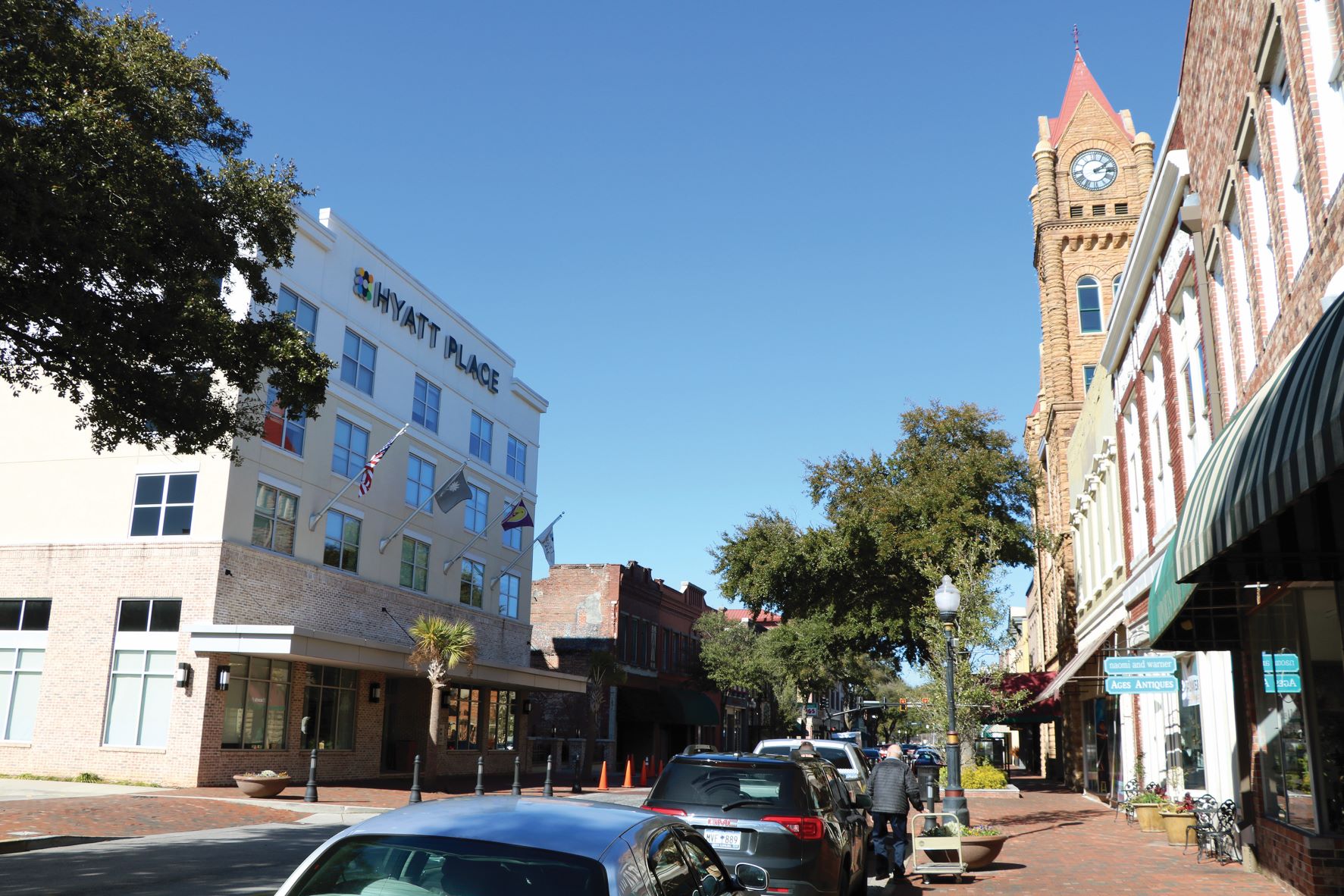As downtown development directors met at the Sumter Opera House for a Main Street South Carolina training session in February, they found themselves across the street from one of Sumter’s great downtown success stories: the Hyatt Place hotel, and the city parking garage behind it.
Assistant City Manager Howie Owens explained the years of work with partners that led to these achievements. The story began in 1999, a time when many in Sumter were concerned about the future of a downtown showing signs of decline and disinvestment.
The original turning point, Owens said, was the Greater Sumter Chamber of Commerce’s focus on the downtown. The initiative spread from there to the city council, and ultimately led to a deal between the city, Sumter County and Sumter School District to establish a tax increment financing district, or TIF district. All three entities agreed to freeze their property tax revenues from the district at the 1999 level, and any revenue growth generated above that would be available for improvements in the district for things like streetscaping, sidewalks and parking.

Sumter pursued tax increment financing for a downtown parking deck that made
possible a new hotel development.
possible a new hotel development.
Next, the city pursued the development of housing downtown. As Owens noted, “you’re not really going to have a good vibrant downtown until you’re a 24/7-type downtown. And at that time, we were really a 9-to-5 downtown mostly.”
Sumter also wanted to pull in a hotel downtown, and found that Hyatt Place would come, but only if the city built a parking deck.
“We started scratching our heads on how in the world we were going to come up with $4.5 million to build a parking garage,” Owens said.
The TIF district was about to expire, which would lead to more tax revenue for the city, county and school district. Owens said the city used its good working relationship with the county as it raised the idea of extending the TIF financing for another 15 years, and then pursued the school district’s approval. The effort involved laying groundwork well in advance, and being transparent about what the county and school district would be giving up in the agreement. The city’s counterparts both approved the move.
The parking garage opened in 2017, built by the same construction company that built the hotel. The downtown district has seen plenty of success since then, with the Downtown Sumter program counting about $6.5 million in investment into the area from 2020 to 2021.
“Many approaches exist for cities to be creative in drawing as much value as possible out of a single project,” said Main Street SC Manager Jenny Boulware.
Main Street SC now has 32 programs working to build the skills and organization needed to guide commercial vibrance in their downtowns.
Boulware also pointed to the value of collaboration in a downtown program. The first point of the Main Street Four-Point Approach, which guides all of its revitalization efforts, is “Organization,” a focus on bringing together all stakeholders, including businesses and nonprofit groups.
In Sumter’s case, Boulware said, the decision to “address downtown parking and lodging issues at the same time put the city and its partners in a great position to provide more and more opportunities for visitors and locals to linger longer in the heart of their downtown.”
Owens said that much of Sumter’s success comes from a willingness to share the credit — focusing not on the efforts of the city, county and other groups, but rather a team of all groups working together. He said the city strives for constant communication with other groups, and makes sure that everyone involved is coming downtown and seeing that “the downtown is the heart and soul of your community. If you don’t take care of the heart, the rest of your community is going to die.”
